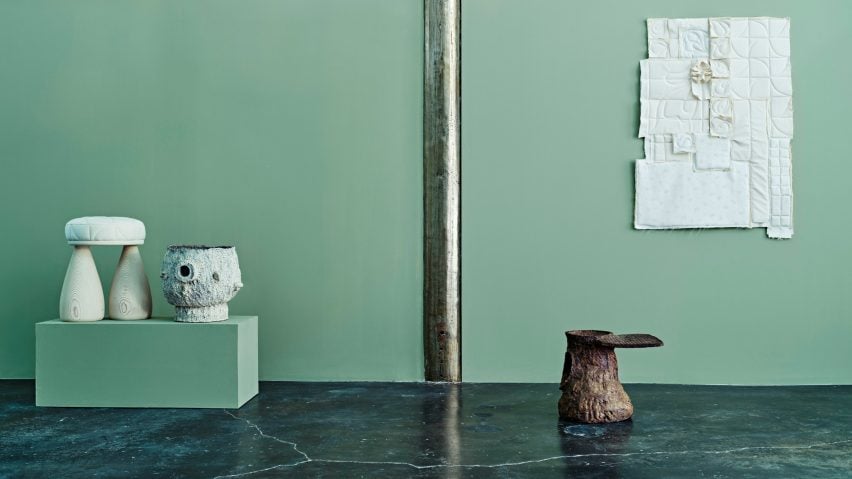
Jeff Martin and Sam Klemick create furniture with an "alternate ending"
The plump furniture of LA-based Sam Klemick sits alongside the tiled-covered joinery of Vancouver-based Jeff Martin in an exhibition at Objective Gallery in New York.
The show, titled Please Sit for the Alternate Ending, brings the two designers' work together in dialogue.
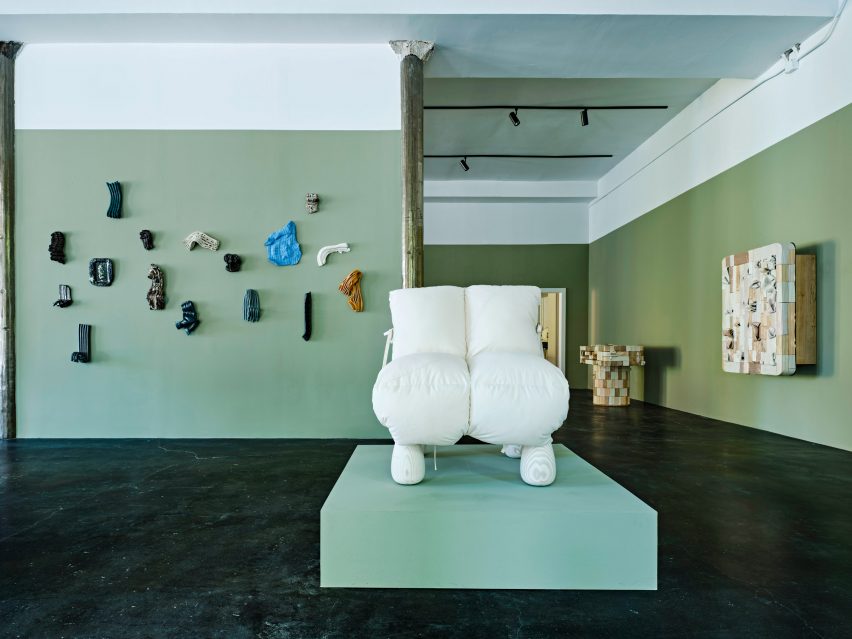
Works on show include chairs with oversized legs, cabinets with peeling clay surfaces and a coffee table whose surface appears to be balanced on huge balls.
The exhibition sets out to explore how different material techniques can give traditional furniture designs a greater sense of joy, humour or ambiguity.
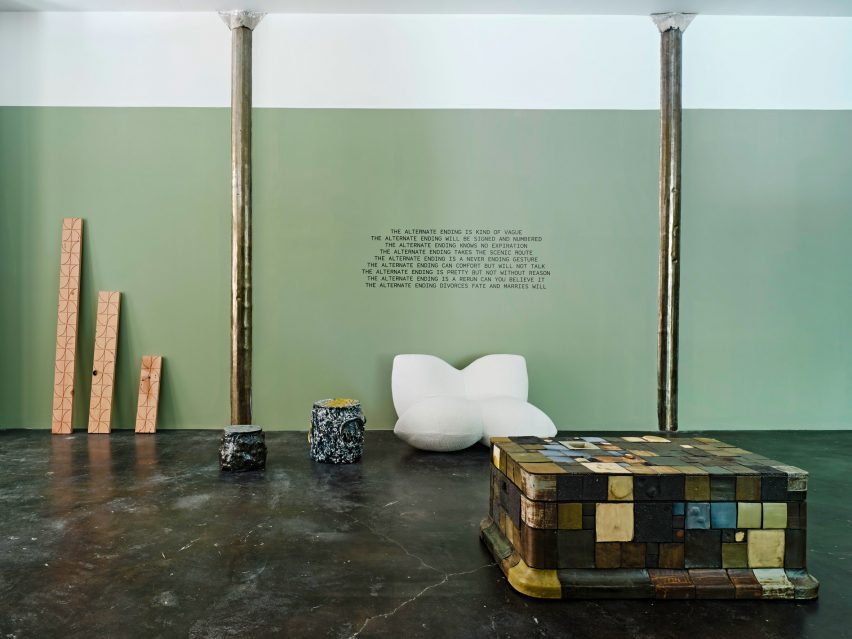
"I feel like the practice of design can become a little convoluted and overthought," said Morgan Meier, Objective Gallery director and the curator of the show.
"You can plan as much as you want, but at the end of the day it comes down to making decisions intuitively, which is something that Sam and Jeff both embrace," she told Dezeen.
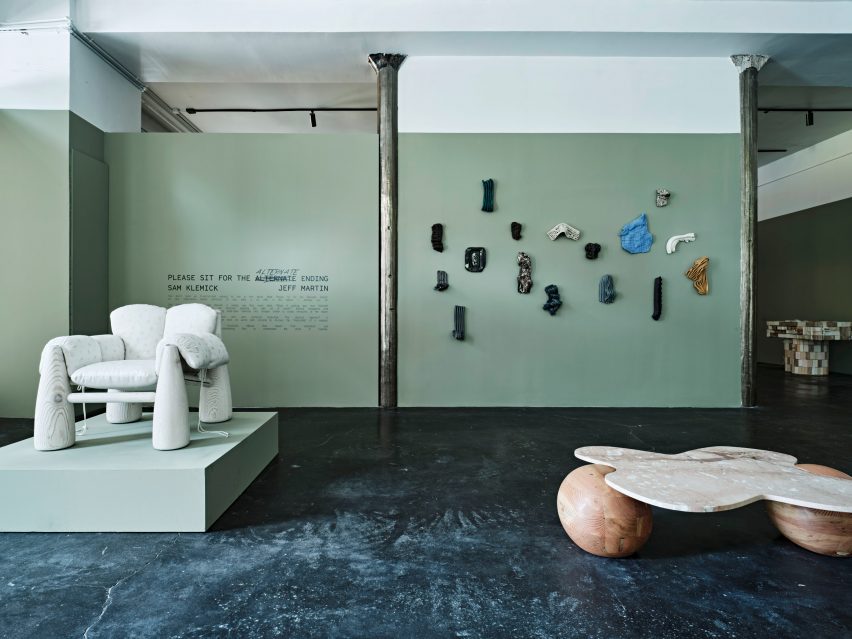
For Klemick, who until recently went by the moniker Otherside Objects, the exhibition showcases her talents in combining oversized forms with delicate, lightweight elements.
Key pieces include her Big Bell Chair and Nap Chair, which she produces using deadstock fabrics and waste wood.
Both feature the bulbous legs that have become her signature, as well as cushioned elements that draw on her background in the fashion industry.
"Everything I make is much bigger than me," she told Dezeen, "but it's fun pushing the scale."
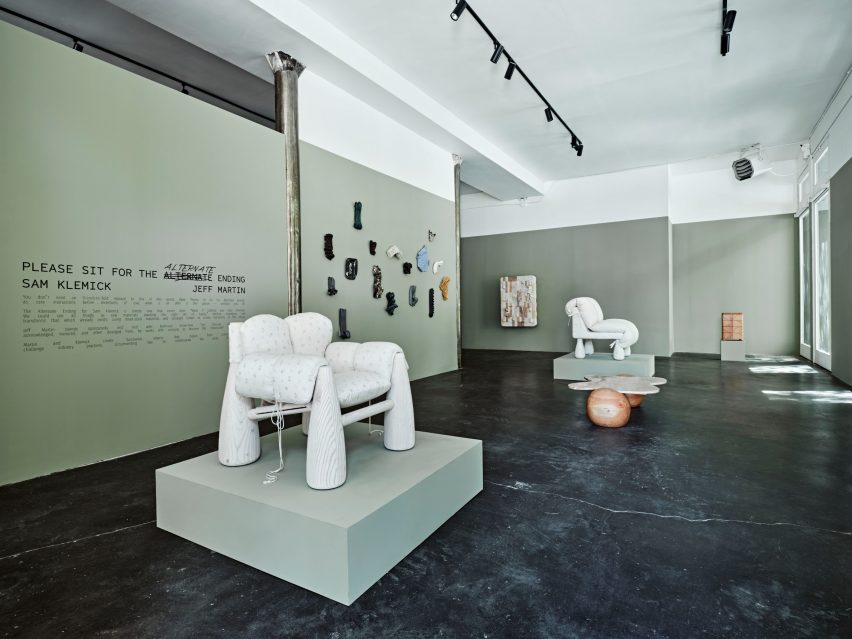
"It's all made with construction-grade Douglas fir that's been salvaged from construction sites around LA," Klemick continued.
"I spend a lot of time with a metal detector making sure I get all of the nails out, so it's really quite a commitment to get the materials to a place where you can begin to use them. But I love to make things difficult for myself."
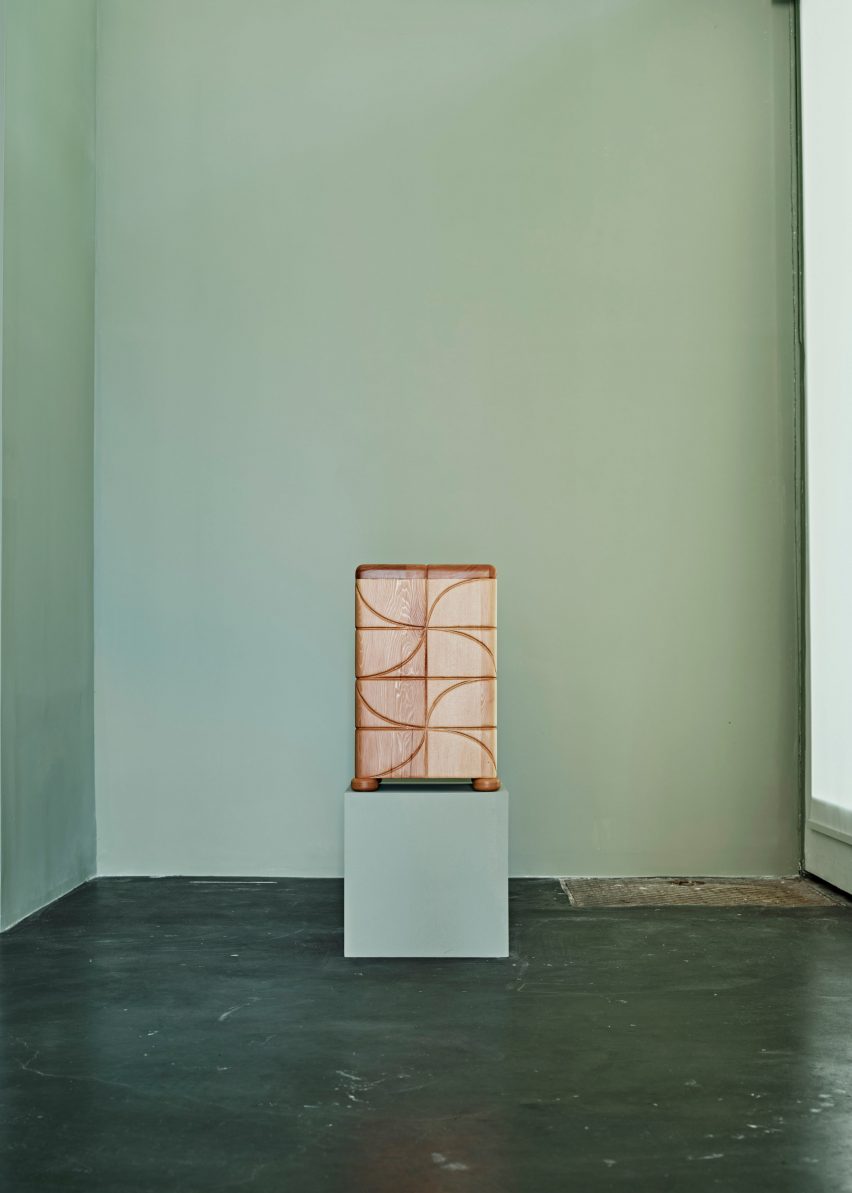
Klemick's Pinwheel Side Table and Stool share similar patterns despite being made from different materials, while the XO Coffee Table balances a thin slab of marble on wooden spheres.
"I like the idea that these two big balls ground the table, while this shape floats on top," she said.
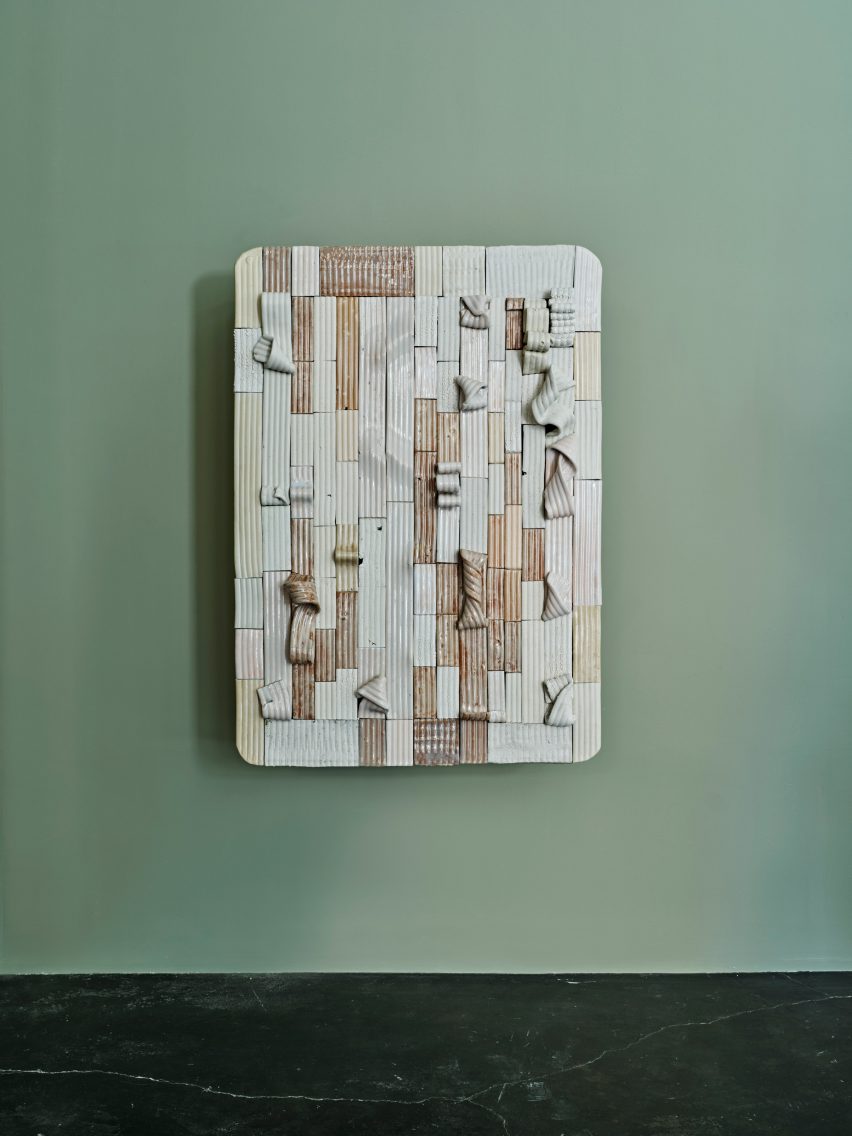
Martin's work brings more complex textures to the display.
The showpieces are the Sarcophagus 11 console table and Sarcophagus 12 cabinet, which are covered in an assortment of handmade tiles. Some of these tiles are flat, while others protrude in different ways.
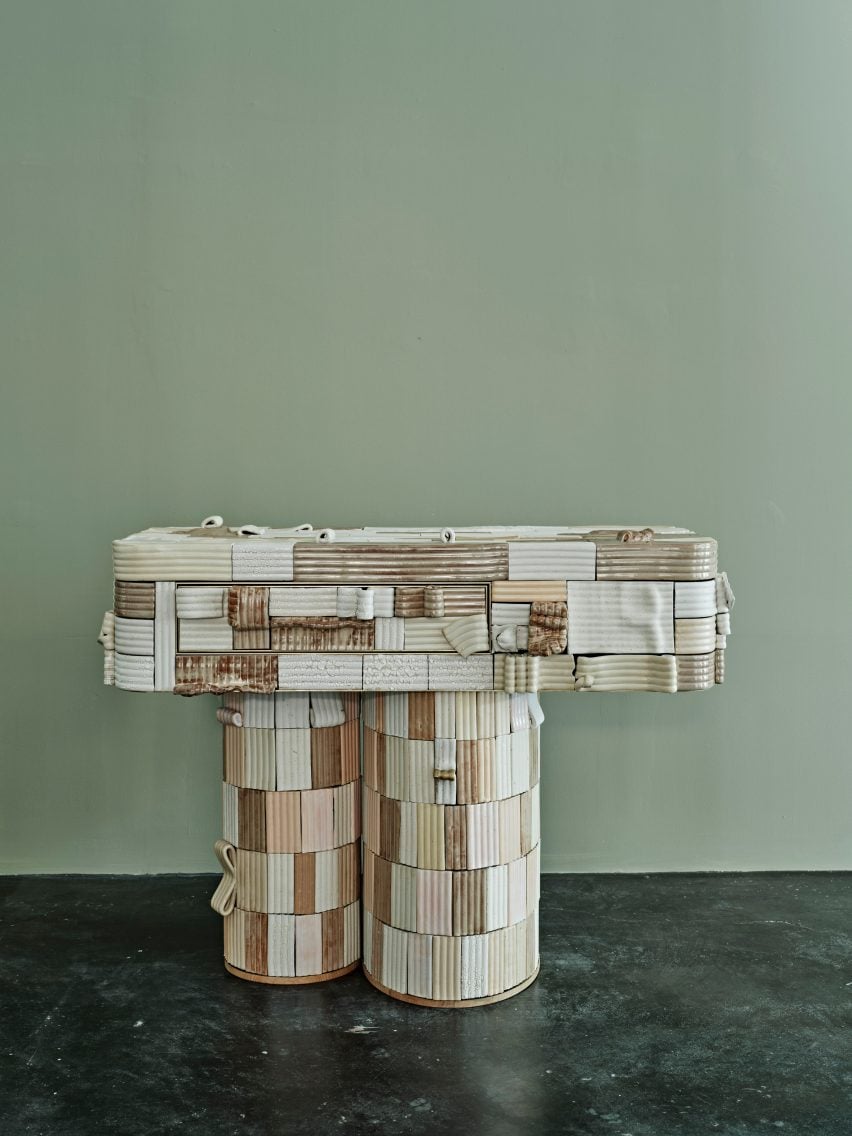
For Martin, who is also the founder of Vancouver gallery Alpenglow Projects, these works came about during a period of experimentation during the Covid-19 shutdown.
"When I started making with clay, it was a therapeutic process at a time when I was also going through a massive change in my life," he told Dezeen.
"There was no end goal initially, but I ended up with thousands of tiles," he said. "It eventually dawned on me; I have a furniture workshop, so why not combine this love of sculpting with cabinetmaking."
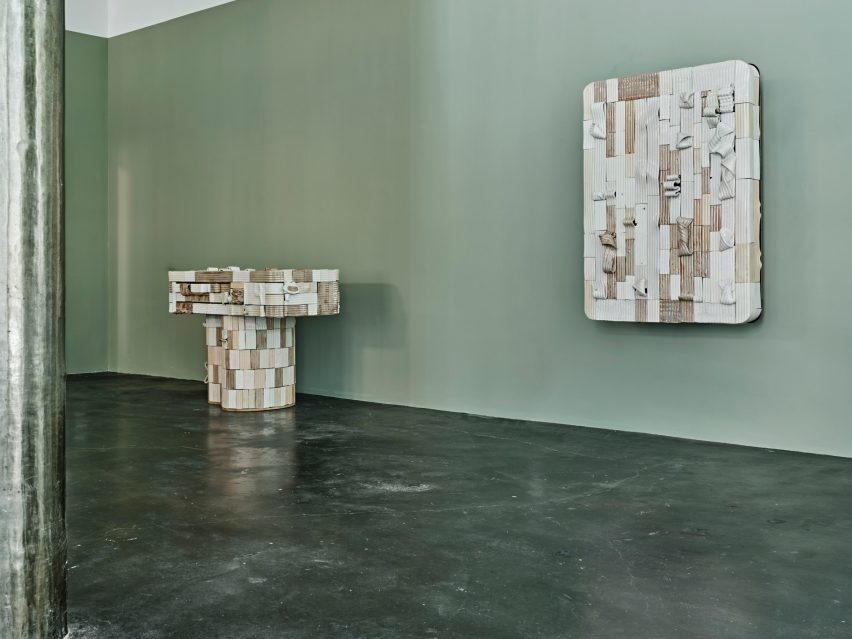
Martin is also showing some smaller ceramic works, while several of his tile experiments feature as wall-mounted pieces.
"They are really fast gestures, captured and frozen as stoneware, but they almost serve as a storyboarding process for the different ways that we made the tiles," he said. "They really touch on the emotion behind the work."
The photography is by John Daniel Powers.
Please Sit for the Alternate Ending is on show at Objective Gallery in New York from 18 August to 27 September. See Dezeen Events Guide for more architecture and design events around the world.